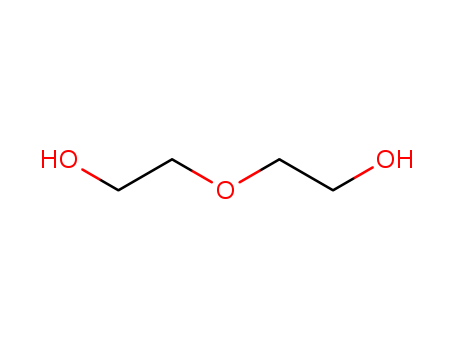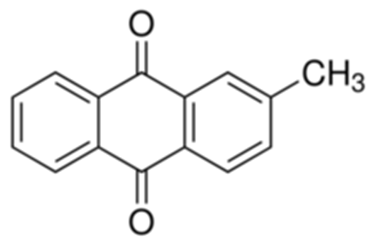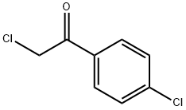Diethylene glycol literature
Synthesis of CNTs@POP-Salen Core-Shell Nanostructures for Catalytic Epoxides Hydration
Li, He,Zhong, Mingmei,Li, Chunzhi,Ren, Yiqi,Chen, Jian,Yang, Qihua
, p. 3952 - 3958 (2019)
Microporous polymers have been considered as promising heterogeneous catalysts for versatile chemical transformations. However, the mass diffusion barriers through the microporous network still remains a big hindrance. Herein, an efficient and versatile strategy for shortening the mass diffusion pathway through microporous polymer was reported by constructing a CNTs@POP-salen core-shell nanostructure. CNTs@POP-Co(salen) could efficiently catalyze the epoxide hydration reaction at H2O/epoxides ratio as low as 2, demonstrating the efficient cooperation of Co(salen) integrated in the polymer network. CNTs@POP-Co(salen) showed much higher activity than bulk polymer in propylene oxide (PO) hydration reaction (TOF: 3150 versus 1470 h?1) due to the shortened diffusion pathway, which was further confirmed by adsorption experiment using phenol as probe molecule. Our primary results demonstrated the advantages of core-shell nanostructures to improve the catalytic activity of microporous polymers by enhancing the mass diffusion during the catalytic process.
CO2atmosphere enables efficient catalytic hydration of ethylene oxide by ionic liquids/organic bases at low water/epoxide ratios
Ding, Tong,Gao, Guohua,Xia, Fei,Yuan, Huixia,Zha, Jinyin,Zhang, Dawei,Zhang, Jingshun
supporting information, p. 3386 - 3391 (2021/05/25)
The development of an efficient and low-cost strategy for the production of monoethylene glycol (MEG) through hydration of ethylene oxide (EO) at low H2O/EO molar ratios is an important industrial challenge. We have established that by using CO2as the reaction atmosphere, hydration of EO can be achieved at a low H2O/EO ratio of 1.5?:?1 along with high yields (88-94%) and selectivities (91-97%) of MEG catalyzed by binary catalysts of ionic liquids and organic bases. The results are significantly better than those of experiments conducted under an atmosphere of N2. Isotope labeling experiments revealed that CO2had altered the reaction pathway and participated in the reaction, in which cycloaddition of EO with CO2occurred first followed by the hydrolysis of ethylene carbonate (EC) to generate MEG and recover CO2. The ionic liquids and organic bases synergistically catalyzed the one-pot two-step reaction. DFT calculations confirmed that this route is more kinetically favorable compared to the pathway of direct epoxide hydration.
Nanotitania catalyzes the chemoselective hydration and alkoxylation of epoxides
Ballesteros–Soberanas, Jordi,Leyva–Pérez, Antonio,Martínez–Castelló, Aarón,Oliver–Meseguer, Judit,Tejeda–Serrano, María
, (2021/10/12)
Glycols and ethoxy– and propoxy–alcohols are fundamental chemicals in industry, with annual productions of millions of tons, still manufactured in many cases with corrosive and unrecoverable catalysts such as KOH, amines and BF3?OEt2. Here we show that commercially available, inexpensive, non–toxic, solid and recyclable nanotitania catalyzes the hydration and alkoxylation of epoxides, with water and primary and secondary alcohols but not with phenols, carboxylic acids and tertiary alcohols. In this way, the chemoselective synthesis of different glycols and 1,4–dioxanones, and the implementation of nanotitania for the production in–flow of glycols and alkoxylated alcohols, has been achieved. Mechanistic studies support the key role of vacancies in the nano–oxide catalyst.
Chromium-Catalyzed Production of Diols From Olefins
-
Paragraph 0111, (2021/03/19)
Processes for converting an olefin reactant into a diol compound are disclosed, and these processes include the steps of contacting the olefin reactant and a supported chromium catalyst comprising chromium in a hexavalent oxidation state to reduce at least a portion of the supported chromium catalyst to form a reduced chromium catalyst, and hydrolyzing the reduced chromium catalyst to form a reaction product comprising the diol compound. While being contacted, the olefin reactant and the supported chromium catalyst can be irradiated with a light beam at a wavelength in the UV-visible spectrum. Optionally, these processes can further comprise a step of calcining at least a portion of the reduced chromium catalyst to regenerate the supported chromium catalyst.
AEROBIC ELECTROCATALYTIC OXIDATION OF HYDROCARBONS
-
Paragraph 0074, (2022/01/04)
This invention is directed to a method of oxygenating hydrocarbons with molecular oxygen, O2, as oxidant under electrochemical reducing conditions, using polyoxometalate compounds containing copper such as Q10 [Gu4(H2O)2(B-α-PW9O)2] or Q12{ [Cu(H2O)]3[(A-α- PW9O34)2(NO3)-] } or solvates thereof as catalysts, wherein Q are each independently selected from alkali metal cations, alkaline earth metal cations, transition metal cations, NH4+,H+ or any combination thereof.







